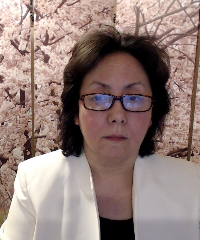RE: MACROINVERTEBRATE LEAF SPECIES PREFERENCE 5th Grade - 2020 SRS - 2020 SRS
GLOBE Breadcrumb
- Home >
- 2020 SRS
Open social media sharing options menu
 Share
Share
GLOBE Side Navigation
Site Name
2020 Student Research Symposium (SRS)
Message Boards
- Home
- RE: MACROINVERTEBRATE LEAF SPECIES PREFERENCE 5th Grade
0
Project Title: MACROINVERTEBRATE LEAF SPECIES PREFERENCE
School Name(s): FRANTZ HOME SCHOOL
Teacher Name(s): Steven Frantz
Student Name(s): ELIZABETH FRANTZ
Grade Level: (grades 3-5, ages 8-11)
Project Description: MACROINVERTEBRATE LEAF SPECIES PREFERENCE: A COMPARATIVE STUDY
Abstract: MACROINVERTEBRATE LEAF SPECIES PREFERANCE: A COMPARATIVE STUDY. Elizabeth Marilyn Yang Frantz. 536 South Summit St. Smithville, Ohio. The purpose of this project was to find out which species of leaves macroinvertebrates prefer. The hypothesis was macroinvertebrates would prefer Sugar Maple leaves over eight other types of leaves. The Stroud Water Research Center, Avondale, Pennsylvania protocol for collecting macroinvertebrates was followed using twenty-seven leaf packs in Sugar Creek. Three data collection points were identified at the site, using nine bags at each site, one for each type of leaves, which were tied to concrete blocks and left to “soak” for seventeen days. The leaf packs were then collected and macroinvertebrates were then identified and counted. The data did not support the hypothesis at all three data collection points. Several factors affecting the data, during the seventeen days the leaf packs were in Sugar Creek, were high water, ice, and tangled lines. The data, however, showed there was minimal affect high water had on this research. Ice and tangled lines on the leaf packs probably resulted in significant loss of macroinvertebrates during the very difficult collection of the leaf packs for the first data set. The data showed macroinvertebrates had no preference to the nine leaf species. Macroinvertebrates seem to be opportunists and will live wherever there is shelter and food. Other relevant research can be done in the future such as finding water quality to help manage this important water resource used, and needed, every day.
Protocols: Freshwater Macroinvertebrates, Green-Up / Green-Down, Water Temperature
Language(s): English
Presentation Video: View Video
Presentation Poster: View Document
Report Page: Link
School Name(s): FRANTZ HOME SCHOOL
Teacher Name(s): Steven Frantz
Student Name(s): ELIZABETH FRANTZ
Grade Level: (grades 3-5, ages 8-11)
Project Description: MACROINVERTEBRATE LEAF SPECIES PREFERENCE: A COMPARATIVE STUDY
Abstract: MACROINVERTEBRATE LEAF SPECIES PREFERANCE: A COMPARATIVE STUDY. Elizabeth Marilyn Yang Frantz. 536 South Summit St. Smithville, Ohio. The purpose of this project was to find out which species of leaves macroinvertebrates prefer. The hypothesis was macroinvertebrates would prefer Sugar Maple leaves over eight other types of leaves. The Stroud Water Research Center, Avondale, Pennsylvania protocol for collecting macroinvertebrates was followed using twenty-seven leaf packs in Sugar Creek. Three data collection points were identified at the site, using nine bags at each site, one for each type of leaves, which were tied to concrete blocks and left to “soak” for seventeen days. The leaf packs were then collected and macroinvertebrates were then identified and counted. The data did not support the hypothesis at all three data collection points. Several factors affecting the data, during the seventeen days the leaf packs were in Sugar Creek, were high water, ice, and tangled lines. The data, however, showed there was minimal affect high water had on this research. Ice and tangled lines on the leaf packs probably resulted in significant loss of macroinvertebrates during the very difficult collection of the leaf packs for the first data set. The data showed macroinvertebrates had no preference to the nine leaf species. Macroinvertebrates seem to be opportunists and will live wherever there is shelter and food. Other relevant research can be done in the future such as finding water quality to help manage this important water resource used, and needed, every day.
Protocols: Freshwater Macroinvertebrates, Green-Up / Green-Down, Water Temperature
Language(s): English
Presentation Video: View Video
Presentation Poster: View Document
Report Page: Link
Attachments:
0
Elizabeth,
My name is Melody Keena and I am a Research Entomologist working for the Forest Service in Hamden, CT. My web page is https://www.nrs.fs.fed.us/people/mkeena. I read your report and thought your questions and general methods were good. You had issues that are common to field work. There is always something like ice or twisted lines that makes the study more difficult. The mix of insects and other invertebrates that you found was partly becasue of the time of the year that you dis your experiement. You might find it interesting to see how what you collect would change thoughout the year as water temperature changes. You made a very good observation that the surface area and amount of places to hide is influences by leaf size (You should have measured the leaves to be able to show a clear realationship graph leaf size vs number of invertebrates found and then add a linear trend line). Below are some thoughts on room for improvement in future studies.
When you set up a study it always has to have replication witin each treatment. So in your experiement you should have had a minimum of 3 bags at each location in the stream so that you could calculate the means and compare those. Since three locations would then be a lot of work you would need to decide if you just wanted to compare the different leaves at just one location.
When you present your methods make sure you tell the reader everything they would need to know to repeat the experiment. Also, when you present results tell the reader what the numbers and numbers in parentheses mean so they don't have to figure it out themselves.
To compare between sites or leaves you need to use statistics which look at the variation betweem the means and determine if it is big enough to be different. One way you can do that visually is show the mean and the standard error. Standard error is the standard deviation divided by the square root of the number of replications. If you want to go into science you will need to learn statisitcs so start now by reading about it.
You did not tell the reader how the biotic index was calculated. Assume the reader knows nothing.
When ecologists look at data like you collected they ask questions about species richness and abundance. You looked at abundance (total species found) but only touched the surface of richness (how many species are found).
My name is Melody Keena and I am a Research Entomologist working for the Forest Service in Hamden, CT. My web page is https://www.nrs.fs.fed.us/people/mkeena. I read your report and thought your questions and general methods were good. You had issues that are common to field work. There is always something like ice or twisted lines that makes the study more difficult. The mix of insects and other invertebrates that you found was partly becasue of the time of the year that you dis your experiement. You might find it interesting to see how what you collect would change thoughout the year as water temperature changes. You made a very good observation that the surface area and amount of places to hide is influences by leaf size (You should have measured the leaves to be able to show a clear realationship graph leaf size vs number of invertebrates found and then add a linear trend line). Below are some thoughts on room for improvement in future studies.
When you set up a study it always has to have replication witin each treatment. So in your experiement you should have had a minimum of 3 bags at each location in the stream so that you could calculate the means and compare those. Since three locations would then be a lot of work you would need to decide if you just wanted to compare the different leaves at just one location.
When you present your methods make sure you tell the reader everything they would need to know to repeat the experiment. Also, when you present results tell the reader what the numbers and numbers in parentheses mean so they don't have to figure it out themselves.
To compare between sites or leaves you need to use statistics which look at the variation betweem the means and determine if it is big enough to be different. One way you can do that visually is show the mean and the standard error. Standard error is the standard deviation divided by the square root of the number of replications. If you want to go into science you will need to learn statisitcs so start now by reading about it.
You did not tell the reader how the biotic index was calculated. Assume the reader knows nothing.
When ecologists look at data like you collected they ask questions about species richness and abundance. You looked at abundance (total species found) but only touched the surface of richness (how many species are found).
0
Hello, Elizabeth
My name is Larisa Schelkin, I am a GLOBE Partner and a proud GLOBE educator (https://www.globe.gov/web/larisa.schelkin/home). I am also a retired petroleum engineer and now work with K-12 educators in a local non-profit Global STEM Education Center in Massachusetts. I enjoyed watching your wonderful presentation, nicely done, thank you for all your hard work on developing a short video! Your project presentation board looks great! Great pictures, great graphs! I have reviewed your report - nicely written abstract; I like how you described the purpose for this project, thank you for sharing your thoughts and your story! It helped you to develop a great research question and a hypothesis. Nice description of the method - step-by-step! Great variables and a LOT of work (three groups of nine bags – 27 bags all together – wow!). Great results, great graphs and a very well thought-through logical conclusion! Also nicely done acknowledgements! Our GLOBE team is joining you thanking Mr. Woods of St. Mary’s School and your parents! Thank you for all your hard work, your passion, your dedication to working on this research project! Great job!
My name is Larisa Schelkin, I am a GLOBE Partner and a proud GLOBE educator (https://www.globe.gov/web/larisa.schelkin/home). I am also a retired petroleum engineer and now work with K-12 educators in a local non-profit Global STEM Education Center in Massachusetts. I enjoyed watching your wonderful presentation, nicely done, thank you for all your hard work on developing a short video! Your project presentation board looks great! Great pictures, great graphs! I have reviewed your report - nicely written abstract; I like how you described the purpose for this project, thank you for sharing your thoughts and your story! It helped you to develop a great research question and a hypothesis. Nice description of the method - step-by-step! Great variables and a LOT of work (three groups of nine bags – 27 bags all together – wow!). Great results, great graphs and a very well thought-through logical conclusion! Also nicely done acknowledgements! Our GLOBE team is joining you thanking Mr. Woods of St. Mary’s School and your parents! Thank you for all your hard work, your passion, your dedication to working on this research project! Great job!
0
I enjoyed reading about your project with macroinvertebrates, and watching the video where you introduced your project. The best part of the project for me was learning that your curiousity led you to different investigations, in addition to the one you started out to research!
In your future projects, it would be helpful if you include an overview of your methods in your video. I was unsure how you were able to keep leaves/macroinvertebrates apart by watching the video (and I was happy to learn about your methods in the paper).
I hope you continue to investigate the macroinvertebrates. I look forward to learning more about what you discover!
Dr. Renee Clary, Professor of Geology, Mississippi State University
RClary@geosci.msstate.edu
In your future projects, it would be helpful if you include an overview of your methods in your video. I was unsure how you were able to keep leaves/macroinvertebrates apart by watching the video (and I was happy to learn about your methods in the paper).
I hope you continue to investigate the macroinvertebrates. I look forward to learning more about what you discover!
Dr. Renee Clary, Professor of Geology, Mississippi State University
RClary@geosci.msstate.edu










